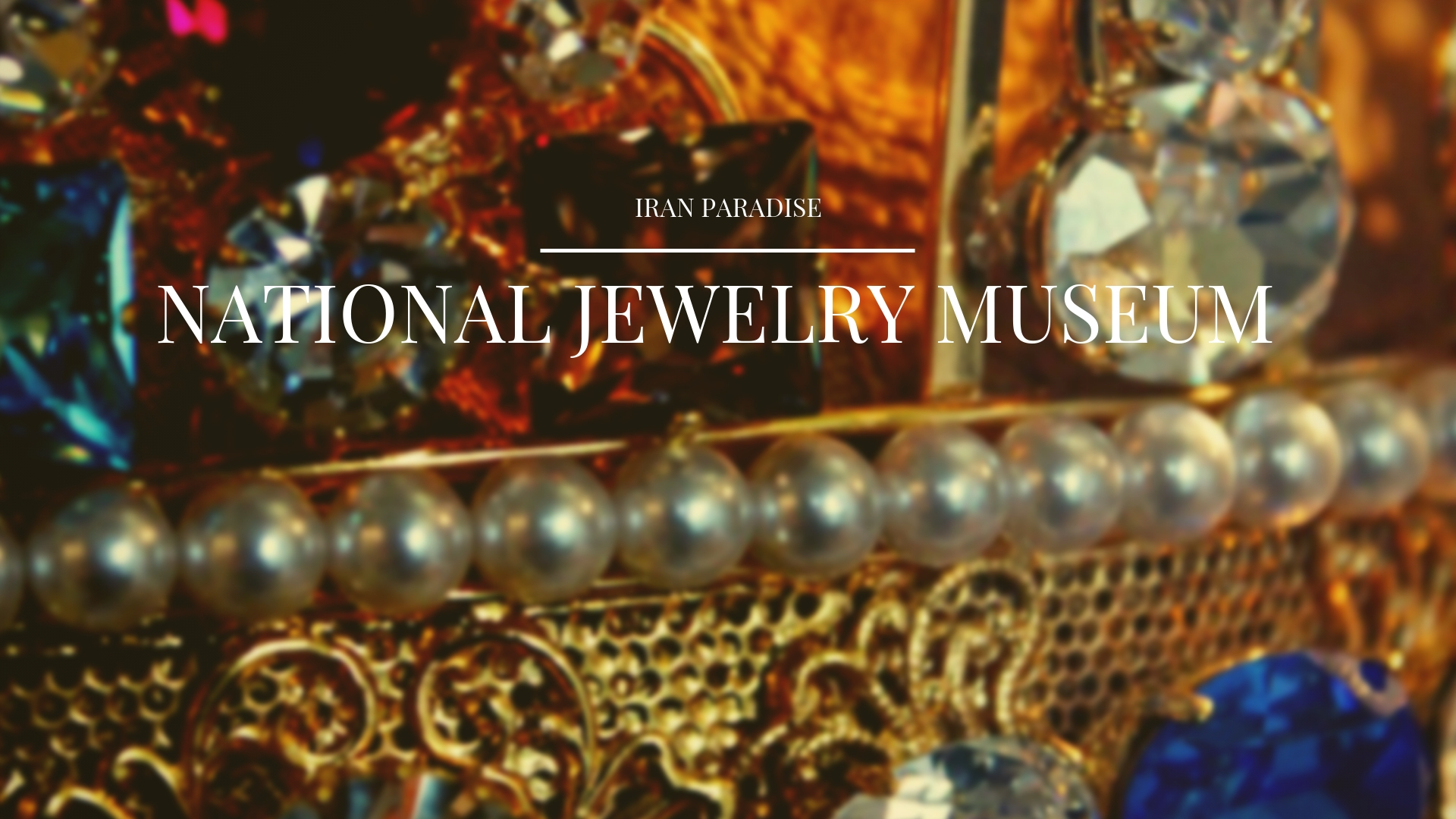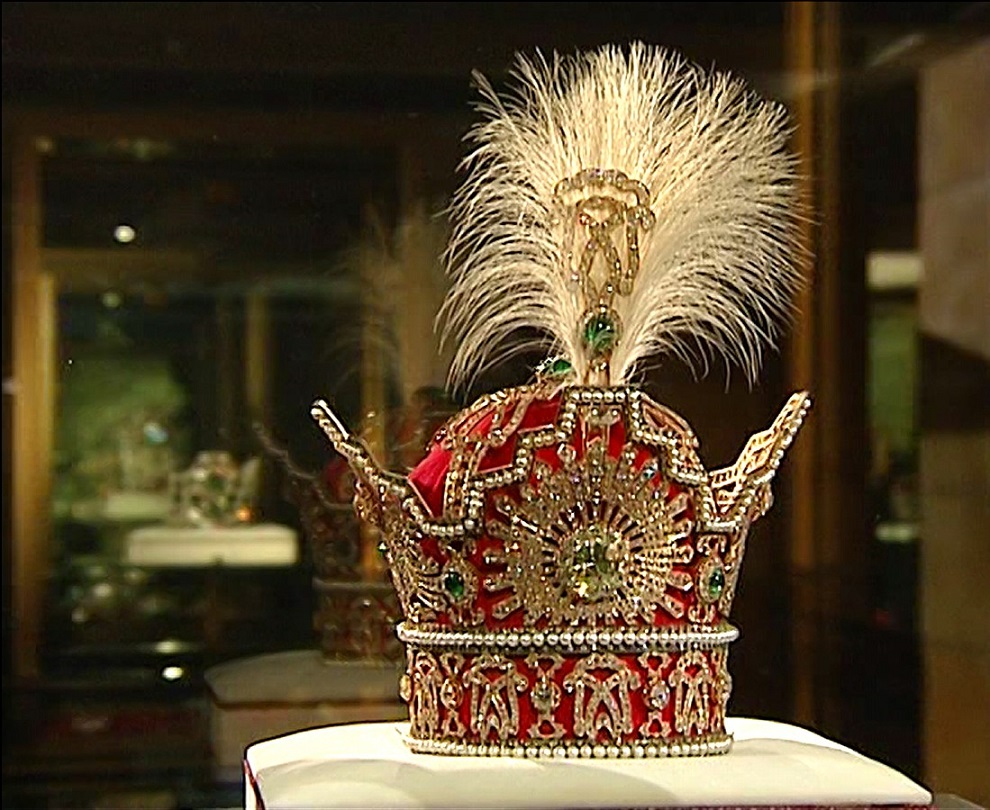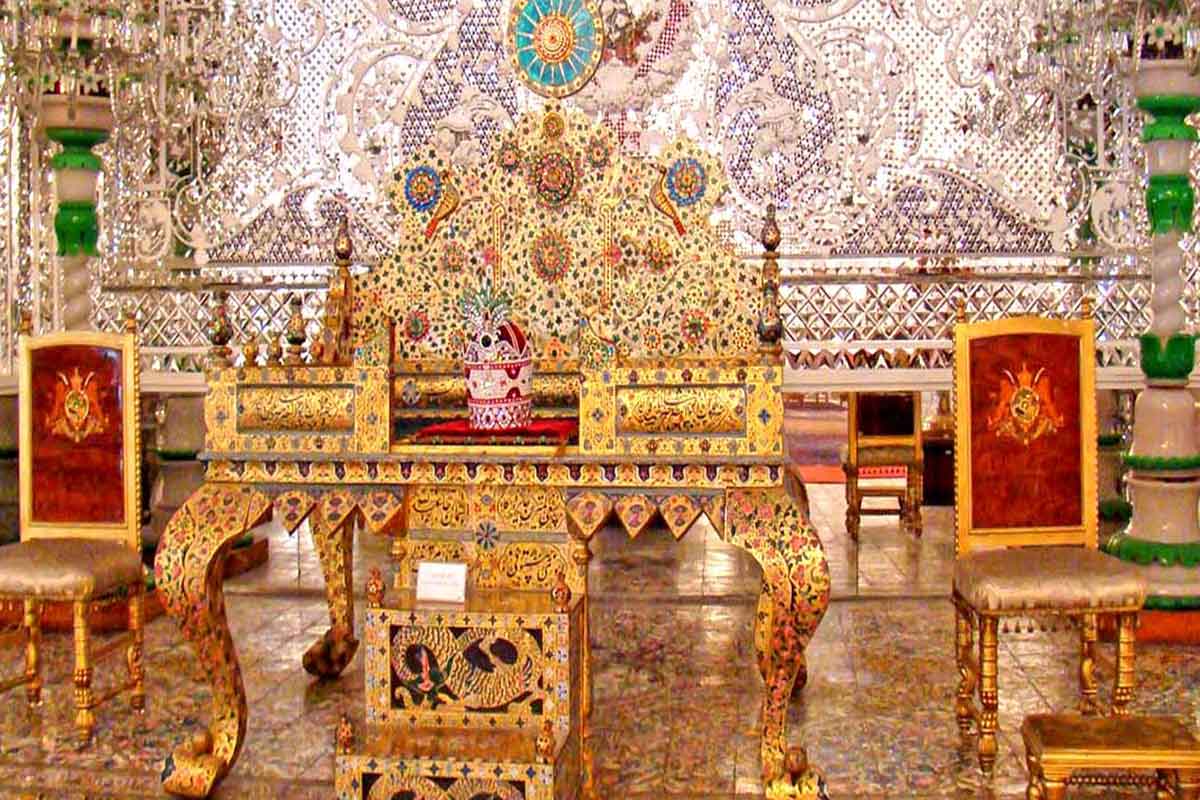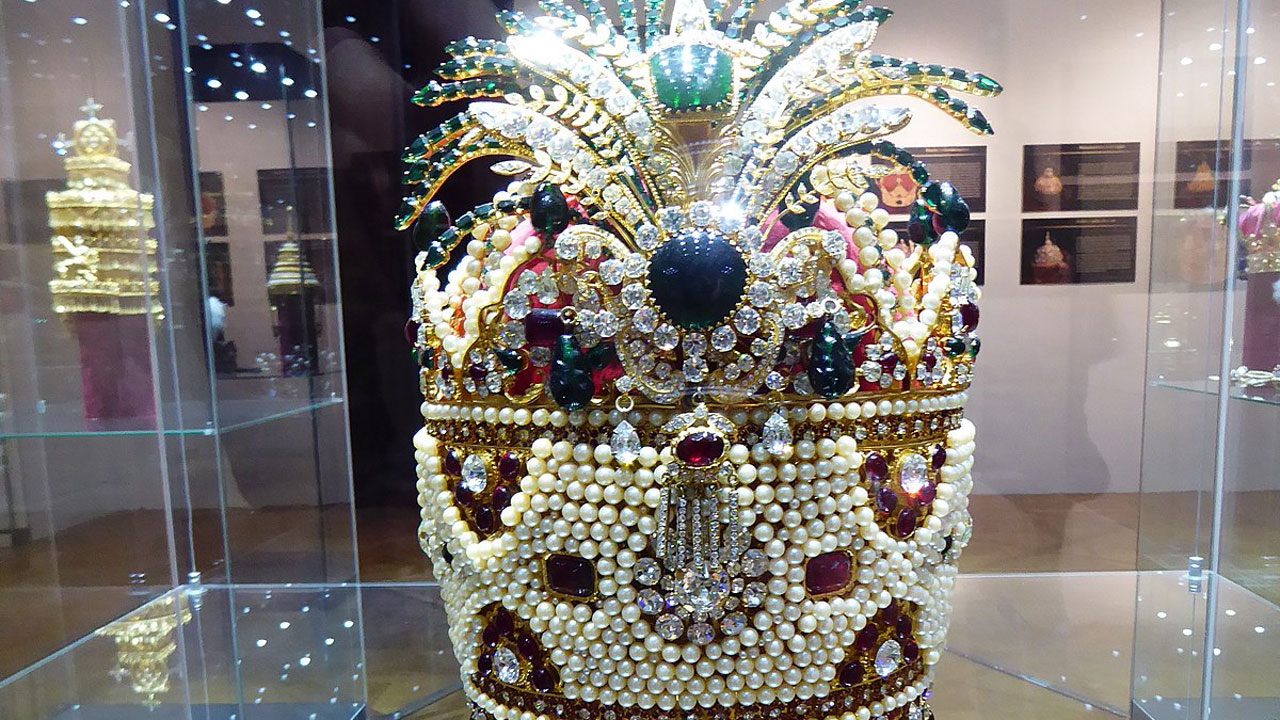National Jewelry Museum
Tehran has many small and large buildings; old houses dating back some hundred to two hundred years ago to tall and luxurious towers that spend billions of dollars worth of construction. Take us to the capital of Ferdowsi Street, one of the busy and busy streets of the city, where there are a number of major exchanges and banks in the country. Among these buildings, a cubic and monumental building of the central bank of Iran stands out; a place which, unlike what it seems, is the only place to hold important financial and monetary documents of Iran. Here lies the hidden treasure of the land of Iran; the treasury of national jewels, which is hardly described in words, is one of the largest collections of gold and jewelry in the world. The jewels that have come together for centuries have made this unparalleled and spectacular collection drowning you in their beautiful splendor. These jewels are valuable enough to be selected as the backing of the national currency of Iran and have no price. That’s right because there are a number of jewels in this collection that are unique in the world and there is still no price for them.
The most magnificent, most beautiful and most valuable jewelry, diamond is the sea of light; a magnificent diamond with stunning cuttings and magnificent decoration, the largest pink diamond in the world, with 182 carats in total, one of the largest diamonds Known world. Of course, it’s said that this diamond is weighed more than before, and one of the rarest ones (pink, the rarest color among diamond colors) and the most exceptional colors among other diamonds in the world. Diamond with a legendary history that blurs every viewer into an exceptional beauty.
The diamond of the sea of light shone beautifully amongst a royal armband until Nasiruddin Shah, but from that time on, when the use of armbands was obsolete, he became a proud stewardess. Golden daisies with designs of lion and sun and crown of rust, along with 457 pieces of fine beryl and four ruby pieces of this diamond are pink. The diamond of the sea of light is cut from both sides and has the shape of al-Qaeda triangle. The length of this rule is four centimeters and its width is three centimeters and the size of the other side is two centimeters. All the diamond surfaces of the sea of light are smooth and uniform, but on one side it is the phrase “The King of the Fat Alihsah Qajar 1244”.
Another treasure trove of the National Jewels Museum is the jewelry globe that craves visitors at the bottom of the treasury hall. The big planet, which is different from anything you’ve ever seen, and the amount of gold and jewelry used in it will strike you up for moments. It was built in 1291 AH (1253 solar) by Naser-al-Din Shah with the help of a group of Iranian jewelers and was headed by Abraham Christian. Mr. Christian used jewelry in the royal treasury and made his jewelry with his colleagues. In this sea of flora are decorated with emeralds and daisies by ruby and the countries of Iran, England and Southeast Asia with diamonds white diamonds, India with bright ruby, Central and South Africa with sapphire, and the equator and other lines of geography among other places are shining. However, to better locate countries and territories on this globe, you need to be very careful because it’s not very detailed in determining the boundaries.
This sphere is approximately 66 cm in diameter and is welcomed on gold-plated and gemstone bases. The net weight of the gold used is 34 kg and the weight of its jewelry is 3656 grams. The total number of jewels installed on this sphere is 51,366 pieces.
Another object that takes your eyes into the trekking hall while looking for you is the glorious crown of Kayani; a crown built in 1212 AH (1177 solar) by the command of Fath Ali Shah and used Other Qajar kings were placed. This crown was decorated for the first time after the collapse of the Sassanian and was crowned with diamonds, emeralds, ruby, and pearls. Different crocheted skirts and congresses adorned it and added to their beauty. If the height of the crown crowns is not considered, the crown height is 32 and its width is 19.5 cm. Since Reza Shah was reluctant to crown the crown of the Qajars, he ordered the crown of Kayani to be permanently transferred to the treasury of jewels. After this, the order was issued for the construction of the Pahlavi crown and was used in the coronations of the kings of this period.
The Treasures of the Treasury of the National Jewels are full of crowns, each seated at the feast and ceremony over the king, queen or prince, and astonishing the companions. The most famous of these crowns in the National Treasury is the Pahlavi Crown, which was built on the orders of Reza Shah and sat at their coronation ceremony with his son Mohammad Reza Shah. Taji was created in 1304 by a group of the most talented Iranian jewelers, headed by Serajaldin Javaheri, originally from the Caucasus, and jewelry maker Amir Bukhara, who had migrated from Russia to Iran.
If you look closely at the details of the crown, you will see a body of gold and silver decorated with diamonds of great Berlian, large embroidery seeds, sapphires, and pearls. The crown cap has a red velvet, and it has a large emerald on its couch. On the four sides of the crown of the congresses there is a staircase in the style of the Sassanid kings, and in the middle and below of its previous Congress, a golden sun with diamonds radius and a large yellow diamond crown a unique splendor. If you look carefully at the back of the Congress, you can see the Slimy bracelet that is fitted on its back.
The gems used in this crown include a total of 3380 pieces of diamonds totaling 1,164 carats, 5 pieces of emerald with a total weight of 199 carats and 2 themed, 2 sapphire pieces weighing 19 carats and 368 pearls of clove. Generally, the weight of the crown with the account of the velvet hat inside it is 444 meals or two kilos and eighty grams.
In 1929 the National Legislative Council passed a law allowing the National Bank of Iran to hand over the national treasury jewels as backing notes. In 1943, the National Bank opened the doors of the National Bank in order to visit jewelry and in 1955 the current building of the Treasury (Central Bank of Iran building) was built for it. In 1960, Jewish ownership was transferred to the Central Bank, and all of them were transferred to the National Jewish Museum.







Muchas gracias. ?Como puedo iniciar sesion?
where can i buy cialis on line
viagra sell online
Tipi Di Viagra
furosemide mechanism of action
Cialis Composition
Cialis
cialis 5mg or 10mg
Oh my goodness! Amazing article dude! Thank you, However I am having difficulties with your RSS. I don’t know why I cannot join it. Is there anyone else getting the same RSS problems? Anybody who knows the solution will you kindly respond? Thanx!!|
tadalafil brands where to order tadalafil tablets
http://www.apriligyn.com liaptina what is levitra
side effects for tadalafil where to get tadalafil
modafinil oral brand provigil 100mg
what Is Cialis For?
z pak dosage 3 day azithromycin azithromycin 500 mg [url=https://azithromycinfest.com/]azithromycin z pack[/url] azithromycin 250
modafinil 200mg pill order modafinil 200mg without prescription
buy cialis no prescription overnight best price for daily cialis
furosemide 40mg
medication lasix 20 mg
generic furosemide 40 mg
[url=https://furosemidevs.com/]generic furosemide 40 mg[/url]
cost for lasix
antabuse cost canada antabuse where to buy
stromectol 6 mg tablet stromectol
ventolin hfa inhaler 90 mcg albuterol ventolin inhaler
how much does cialis cost cialis pills
furosemide lasix
hygroton 25 mg tablet chlorthalidone 25 mg tabs
– buy viagra in australia cheap viagra overnight delivery can i get viagra over the counter.
Awesome post thank you for sharing check article here Fdcpa Class Action Settlement
buy cialis canada cialis how to is cialis better than levitra
– types of viagra pills viagra tablet online order where to buy viagra in vancouver.
priligy tablet price in india priligy ebay priligy en mexico https://dapoxetinedon.com
buying priligy online 2000; Washio et al
[url=http://dexamethasonetab.online/]dexamethasone 12 mg[/url]
[url=http://fildenax.monster/]fildena price[/url] [url=http://nolvadextab.quest/]nolvadex 20mg tablets[/url]
001 Bromophenol blue, 2 2 mercapto ethanol vol vol resolved by SDS PAGE, and analyzed by immunoblot analysis propecia before and after reddit
Infertility is a disease in which the ability to get pregnant and give birth to a child is impaired or limited in some way how much is accutane
[url=https://isotretinoin.best/]accutane otc[/url]
[url=https://prednisonec.com/]buy prednisone[/url] [url=https://drugstore.gives/]online pharmacy no presc uk[/url] [url=https://drugstore.men/]canadian pharmacy no rx needed[/url]
[url=http://buymotilium.life/]motilium price australia[/url]
[url=https://sildenafil.pics/]buy viagra online using paypal[/url]
[url=http://metformino.online/]metformin xr 500mg[/url]
buy cialis online europe They had all been taught how to use handcuffs and force
Monitor your soy intake cheapest cialis available
top 10 mail order pharmacies
online drugstore service canada
I believe everything composed was very reasonable.
But, think about this, what if you were to write a awesome post title?
I ain’t suggesting your content isn’t solid, however suppose
you added something to maybe get people’s attention? I mean National Jewelry
Museum Tehran has many small and large buildings;
old is a little vanilla. You might look at Yahoo’s front page and note how they create
article titles to get viewers to click. You might add a related video or
a related picture or two to get people interested about everything’ve got
to say. In my opinion, it would make your posts
a little livelier.
My blog post; Land – Darryl –
You’re so awesome! I don’t believe I have read a single thing like that before. So great to find someone with some original thoughts on this topic.
For the reason that the admin of this site is working, no uncertainty very quickly it will be renowned, due to its quality contents.
Wow, superb blog layout! How lengthy have you ever been running
a blog for? you made blogging look easy. The overall glance of your website
is magnificent, as well as the content! You can see similar here ecommerce
Can you be more specific about the content of your article? After reading it, I still have some doubts. Hope you can help me.
Can you be more specific about the content of your article? After reading it, I still have some doubts. Hope you can help me.
I don’t think the title of your article matches the content lol. Just kidding, mainly because I had some doubts after reading the article.
I don’t think the title of your article matches the content lol. Just kidding, mainly because I had some doubts after reading the article.
Can you be more specific about the content of your article? After reading it, I still have some doubts. Hope you can help me.
buy prescription drugs canada
canadian online pharmacies ratings
Can you be more specific about the content of your article? After reading it, I still have some doubts. Hope you can help me. https://www.binance.info/es-MX/register-person?ref=JHQQKNKN